Friday, February 19, 2021 – Kilgore College Rangerettes
- Mary Reed

- Feb 28, 2021
- 8 min read
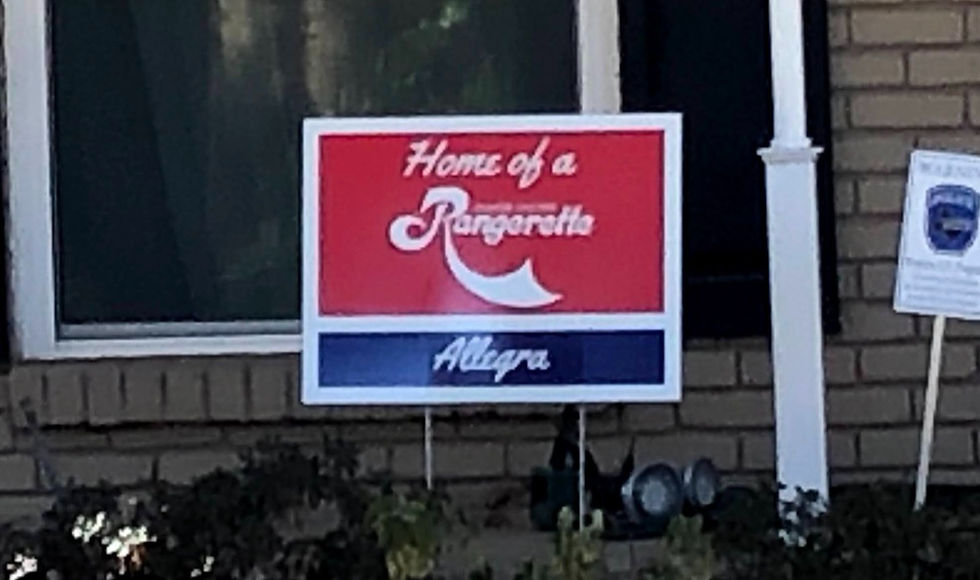
I walk by a house in Farmers Branch with a sign “Home of a Kilgore College Rangerette Allegra.” I lived in East Texas for over 30 years and am familiar with the Kilgore College Rangerettes. Longview — where I lived most of those 30-plus years — was 10 miles from Kilgore. There is an alumni group “Rangerettes Forever,” and I knew a few of the women in this group. I also knew a reporter for the Kilgore News Herald who did a long feature on the Kilgore College Rangerettes, doing lots of research. This small town of not quite 15,000 people — including a junior college with 4,900 students — has made quite a splash with its now world-famous Rangerettes. Dance drill teams are now quite common, but when the Rangerettes started in 1939, they were not. Let’s learn more about this growing phenomenon.

According to Wikipedia, the Kilgore College Rangerettes — also known simply as the Rangerettes — are an American precision dance team from Kilgore College in Kilgore, Texas, created by Gussie Nell Davis in 1939. The Rangerettes have performed in 70 Cotton Bowl game halftimes in a row (1951-2020) and make regular appearances at NFL pre-game and half-time shows for the Dallas Cowboys and Houston Texans. The Rangerettes perform at Kilgore College football games and in many other athletic and special events, including the Cotton Bowl game, the Macy's Thanksgiving Day Parade and many presidential inaugurations. They have taken several world tours since the 1970s, including South America, the Far East, Romania, France, Canada, Japan, Italy, Switzerland, England, Scotland and Ireland.
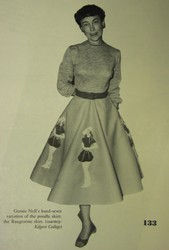
The Kilgore College Rangerettes were founded by Gussie Nell Davis, a physical education instructor from Farmersville, Texas, who created a pep squad at Greenville High School in Greenville, Texas in 1929. The team was called the "Flaming Flashes," and they performed at every football game halftime. During Miss Davis’ ten years at Greenville, the team evolved from just simple marching, stunts and holding up letters to performing basic dance steps. Wooden batons were added when Davis commissioned the school's nearest furniture maker to make them. Eventually, with some help from band director Letcher Stark at Port Arthur High School in southeast Texas, the Flaming Flashes became a precision drum and bugle corps.
Davis received a master's degree in science from the University of Southern California in 1938. In 1939, the president of Kilgore College, Dean B.E. Masters, contacted Gussie Nell Davis about coming to Kilgore, Texas, to start a group that would “be interesting and keep the folks in their seats at half-time.” The school also needed to recruit women to the school since the enrollment was primarily made up of men who were seeking to learn more about the oil business. Masters wanted something that would increase female enrollment at the college but would also keep fans in their seats during football halftime shows instead of drinking alcohol under the stands. Dr. Masters was not quite sure what he wanted, but he knew he did not want a traditional drum and bugle corps. He wanted something new, something that did not yet exist, and left the decisions up to Miss Davis.

Opting early to forgo the use of musical instruments, Davis focused her new team on dance and choreography, later naming the group the Rangerettes. They first performed in September 1940 and were the first all-girls dance-drill team in the United States to perform during the half-time periods of college football games. The Rangerettes became a success early on despite criticisms of their uniforms featuring skirts above the knee, which by the 1960s had become much shorter.
A disciplinarian, Davis built the Rangerettes into a self-confident squad. She directed routines that were routinely more athletic and aerobic, and the squad were featured extensively in the press. The Rangerettes almost immediately became the gold standard for all teams — both high school and college — and almost all Texas drill teams now consist of a line of performers with the officers in front of the team leading them in at every game. Davis served as the group's director for 40 years, retiring in June 1979, but still remained the group’s godmother.

Alongside her work, Davis acted as a consultant, judged drill-team competitions, was a member of the National Drill Team Directors Association and was part of the Fiesta International board of directors. In 1958 Davis — with the retired director of the SMU Mustang Band Irving Dreibrodt — founded the American Drill Team Schools which gives instruction to drill teams across the United States.

In Tyler, Texas, just 30 miles from Kilgore, the second college drill team to be created in Texas was the Tyler Junior College Apache Belles in 1947. A fierce but friendly rivalry between the Apache Belles and the Rangerettes developed quickly and continues to this day.
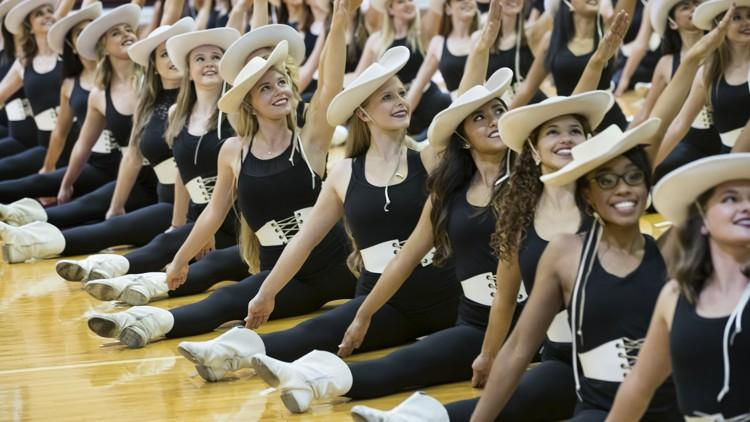
Much like Miss Davis, Barbara Tidwell, a former Kilgore College Rangerette, was recruited by Southwest Texas State University — now Texas State University — in 1960 to create the “Strutters,” the first drill team at a four-year college.
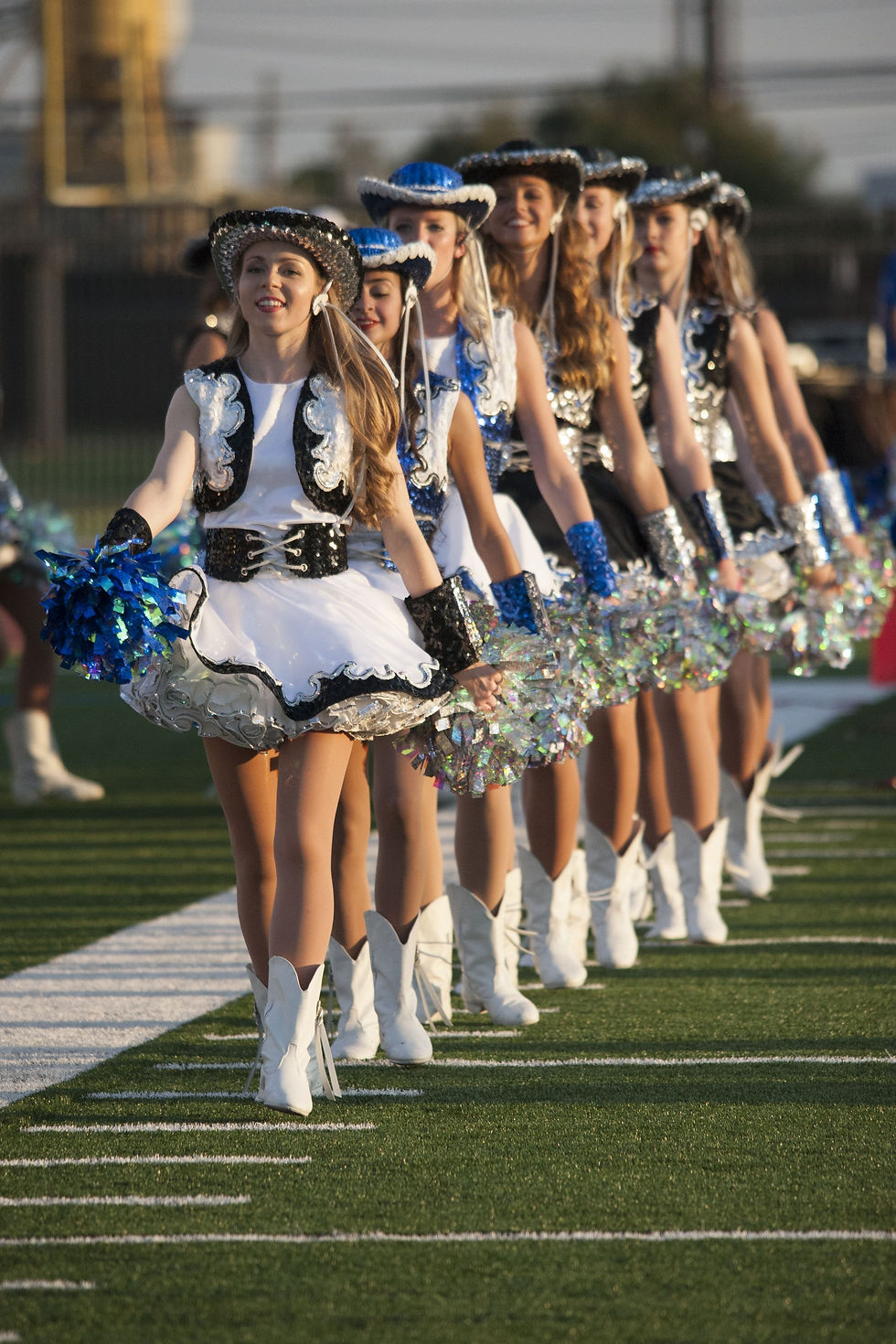
There are over a thousand high school drill teams in the state of Texas today with over 30,000 students participating every year. The traditional uniform for these teams usually consists of a white hat with white boots. The officers of the teams also typically wear an all-white uniform, while the line members wear school colors. Teams perform visual routines — usually in the style of kick, prop, military or pom at football games— both in the stands during the game and on the field at halftime. During the spring, teams often perform at basketball game halftimes and compete in many different dance styles at competitions sponsored by dance and drill team companies. Also in the spring, teams put on a "Spring Show," similar to a recital, to showcase all of the dances they performed at competitions for the school and community. The finale consists of a traditional kick routine in their school uniforms.
Traditionally, Texas high school drill teams have been all female, but males have auditioned and been selected to teams in recent years.
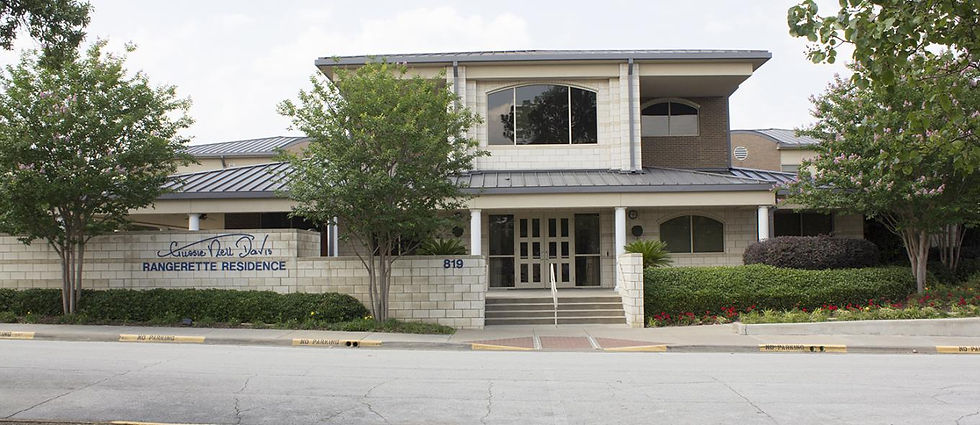
Davis' work created a multibillion industry that encompasses multiple uniform and prop companies, drill camps worldwide, specialist choreographers and travel agencies dedicated to the drill-team-dance style she built upon. She chose not to marry or have children; she told the Irving Daily News in 1979: "The Rangerettes is [sic] my child." Davis was honored with Gussie Nell Day in Kilgore in 1964 and in Farmersville six years later. It was followed up with a Texas-statewide celebration in 1979. She was named the 1969 Texas Woman of the Year by the Texas State Civitans. Davis was named an honorary citizen of Fort Worth and received a State of Texas House of Representatives Certificate of Citation. In 1975 the Houston Contemporary Museum of Art honored her for creating a "living form" of art. She was inducted into the Texas Women’s Hall of Fame in 1989. She died December 21, 1993. In 2006, a former Rangerette, Kathryn Heller Zwick and her husband Nick, donated $3.5 million to help the college build the Gussie Nell Davis Rangerette Residence — a testament to the legacy of young women whose lives Davis touched and helped prepare for life beyond college. All Rangerettes are required to live in the residence hall — even local girls.

Rangerette Revels
Revels is an annual variety show with a central theme performed at Dodson Auditorium on the Kilgore College campus. Revels features performances by Rangerettes with several dances choreographed by nationally known choreographers such as J.T. Horenstein and Tracie Stanfield. There are five showings within the week of the program, and it is the last major performance of the year for the group. The revenue generated by the shows make it one of Kilgore College's highest grossing events. The last segment of the show is always an extended production kick routine, featuring all of the Rangerettes in the traditional uniform. Approximately 6,000 people see the show each year, with many people traveling from out of town to attend and provide a boost to Kilgore's economy.

Alumni donations
During the week of Revels 2019 (April 10–13), a donation of $1 million was made to the Mike Miller Rangerette Fund to complete a permanent operating endowment for the Rangerettes. The anonymous donor was a Kilgore College graduate whose wife is a former Rangerette.
On Saturday, October 19, 2019, a former Kilgore College Rangerette and her husband donated a $3.5 million estate gift to fund scholarships for the Rangerette organization. The trust is set up to provide scholarships for Rangerettes and Rangerette Managers who meet the endowment's academic criteria.
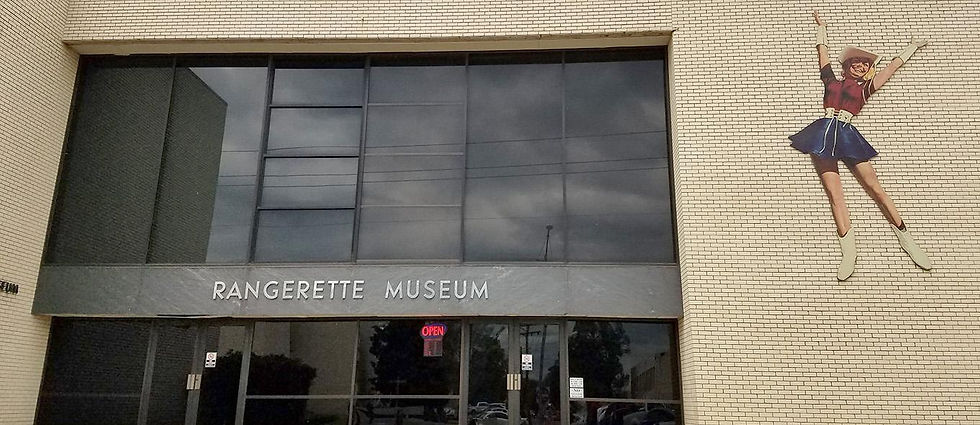
Rangerette Showcase and Museum
According to https://kilgore.edu/campus-life/rangerette-showcase-and-museum, the Rangerette Showcase and Museum features a mechanized display of Rangerette props, a display of costumes from the spring stage show, Rangerette Revels, and thousands of photographs and newspaper clippings depicting the Rangerettes' storied history. It is located in the Physical Education Complex at the intersection of Broadway and Ross on the Kilgore College campus, one block west of Highway 259. Hours are Wednesday-Friday from 10 a.m. to 3 p.m.
The museum includes:
- Two wall-mounted televisions with footage of Rangerette performances.
- A longer film in a comfortable 60-seat theatre with large screen.
- A lounge area that pays tribute to Gussie Nell Davis, originator of precision dance drill and founder and longtime director of the Rangerettes.
- A display of Miss Davis' personal mementos of 40 years, along with a large portrait donated by a former Rangerette and her family.
- "Can You Name Our Famous Friends" features photographs of the Rangerettes with celebrities from the fields of politics, news, communications and show business.
- A collection of Rangerette Scrapbook photos and mementos arranged by former students.
- A wall collage that recognizes numerous college organizations that have played a part in Rangerette history: Ranger Band, Kilgore College Rangers athletic teams and the KC cheerleaders.
- Tribute is paid to numerous local people who have aided in the Rangerettes’ rise to prominence, including an early sponsor, newspaper publisher, accompanist, choreographers, assistants to the director, band directors and college presidents.

Controversy and criticism
According to Wikipedia, until the 1970s there were no African American members of the team. According to the Texas State Historical Association, Davis said she would "be receptive when a qualified Black tried out." The Rangerettes selected their first Black team member, Freddie Goosby Evans, in 1973 and their first Black officer, Briana McLaughlin, in 2012.
Some critics have "expressed dismay at the emphasis on physical attractiveness and rigorous and authoritarian training." Davis countered, "that there was nothing wrong in learning self-confidence, discipline, cooperation and the ability to perform precision dance, along with poise, etiquette and personal grooming."

Rangerette kidnapping
In the late afternoon of December 29, 2016, there was an armed home invasion and kidnapping at Rangerette Director Dana Blair's home. The assailant kidnapped Blair's daughter Alexa, who at the time was a freshman Rangerette. She escaped her captor a little over an hour later. The assailant, Nancy Alice Motes, was arrested on a charge of aggravated kidnapping and released on $500,000 bond on December 30, 2016.
On June 22, 2017, Motes was indicted by a Gregg County grand jury and faced first-degree felonies in three charges encompassed in two counts for aggravated kidnapping. The first count included two charges: aggravated kidnapping with intent to terrorize and aggravated kidnapping with a deadly weapon. The second count had one charge of aggravated kidnapping by deadly force.
On December 21, 2018, Blair's attorney filed a civil lawsuit against Motes seeking monetary relief of between $200,000 and $1 million.
On January 22, 2019, a start date of April 15, 2019, was set for the criminal trial against Motes.
On April 29, 2019, Motes pleaded guilty to two counts of aggravated kidnapping, one with a deadly weapon and one with deadly force. She was sentenced to two concurrent five-year terms and must serve half of her five-year sentence before she is eligible for parole.

Popular culture
In anticipation of the organization's 75th anniversary, filmmaker Chip Hale followed the Rangerettes for a year, creating the documentary “Sweethearts of the Gridiron.” In addition to “Sweethearts of the Gridiron,” the Rangerettes have appeared in four additional feature films: “Seven Wonders of the World” in 1956, “Beauty Knows No Pain” in 1971, “Semi-Tough” in 1977 and “Johnny Be Good” in 1988.
The Rangerettes have been featured in articles in several media publications, including Life magazine, Sports Illustrated, Newsweek, Esquire, Texas Monthly, The Saturday Evening Post, Popular Mechanics and Texas Highways.
In the “King of the Hill” episode "The Company Man" — Season 2, Episode 9 — Hank asks Peggy to wear a Kilgore Rangerette type outfit when they go out to dinner with Mr. Holloway, a man heavily influenced by Texan stereotypes.
In the February 14, 2020, comic strip “Over the Hedge,” the Rangerettes were mentioned as sending a Valentine’s Day card to one of the characters.




Comments